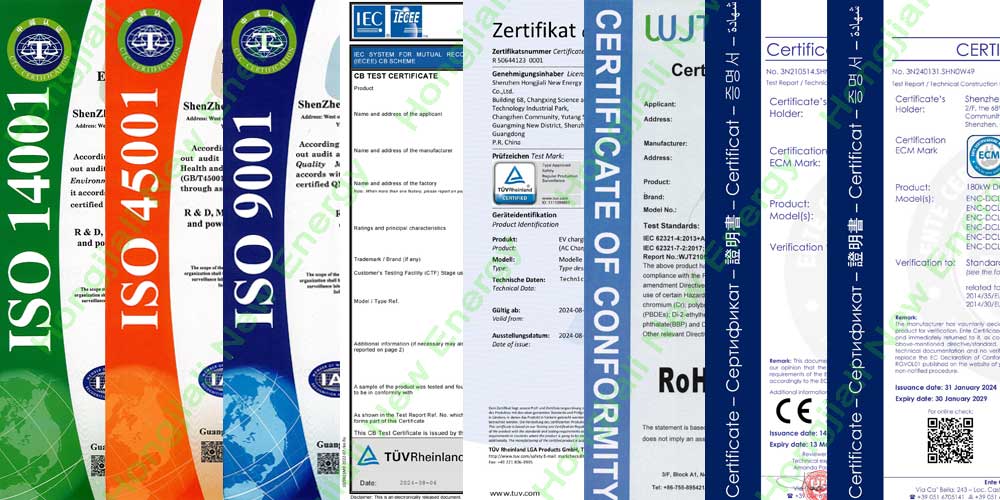-
 +86 18924678741
+86 18924678741 -
 sales@hjlcharger.com
sales@hjlcharger.com -
 Shenzhen City, Guangdong Province, China
Shenzhen City, Guangdong Province, China
V2G charger, Vehicle-to-Grid charger, is a technology that interacts between electric vehicles and the power grid. It involves electric vehicle batteries and power grids, aiming to solve grid load problems and improve the safe and efficient operation of the grid system. V2G is a technology for electric vehicles to transmit energy to the power grid, targeting electric vehicle batteries and power grids.
V2G charger is an electric vehicle charger with bidirectional energy flow function. It can not only supply power and charge to electric vehicles, but also obtain electric energy from electric vehicles to achieve two-way transmission of energy. This bidirectional transmission feature enables V2G chargers to participate in the operation and management of the power system more flexibly.
Specifically, when the grid load is low, V2G chargers can use the on-board batteries of electric vehicles to store excess electric energy, thereby avoiding the waste of resources. When the grid load is high, the V2G charger feeds back the energy stored in the electric vehicle to the grid, achieving the effect of peak shifting and valley filling.
We recommend a 60kW V2G charger with the following product parameters:
Product number | DCL060A-V2G | ||
Detailed specifications | rated power | 60kW | |
charging equipment | Installation method | Floor-mounted | |
route | down in down out | ||
Equipment size | Subject to P/L | ||
Rectification mode | Input voltage range | 260~485VAC | |
input voltage frequency | 45~65Hz | ||
Output voltage range | 150~750VDC | ||
Maximum output current | 200A | ||
Inverter mode | DC input voltage range | 300~750VDC | |
DC input maximum current | 200A | ||
AC output voltage range | 260~485VAC | ||
AC output frequency | 45~65Hz | ||
cable length | 5m | ||
Measurement accuracy | Level 1 | ||
Electrical indicators | Current limit protection value | ≥110% | |
Voltage regulation accuracy | ≤±0.5% | ||
Steady flow accuracy | ≤±1% | ||
Ripple factor | ≤±1% | ||
efficiency | ≥94.5% | ||
power factor | ≥0.99 (above 50% load) | ||
Harmonic content THD | ≤5% (above 50% load) | ||
feature design | HMI | 7 inch LCD color display touch screen | |
charging mode | Automatic charging/fixed power/fixed amount/fixed time | ||
payment method | Credit card payment/scan code payment | ||
Networking | Ethernet 3G/4G | ||
safety design | Executive standard | GB/T20234, GB/T18487, GB/T27930, NB/T33008, NB/T33002 | |
security function | Charging gun temperature detection, over voltage protection, under voltage protection, overload protection, short circuit protection, grounding protection, over temperature protection, low temperature protection, insulation monitoring protection, reverse polarity protection, lightning protection, emergency stop protection, leakage protection | ||
Environmental indicators | Operating temperature | -25℃~+55℃ | |
Working humidity | 5%~95% non-condensing cream | ||
working altitude | <2000m | ||
Protection class | IP54 | ||
cooling method | air cooling | ||
noise control | ≤60dB | ||
MTBF | 100,000 hours | ||












